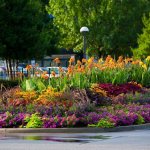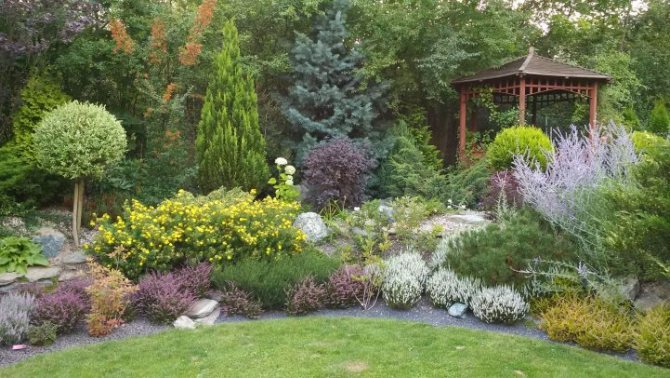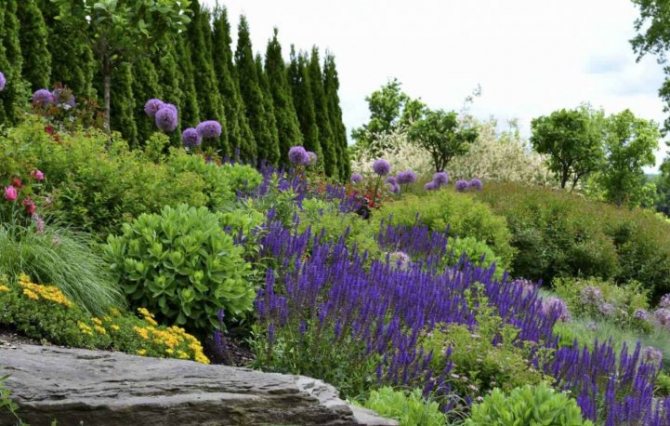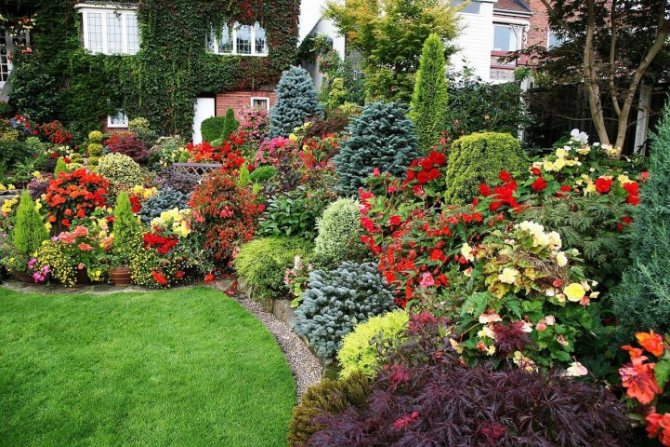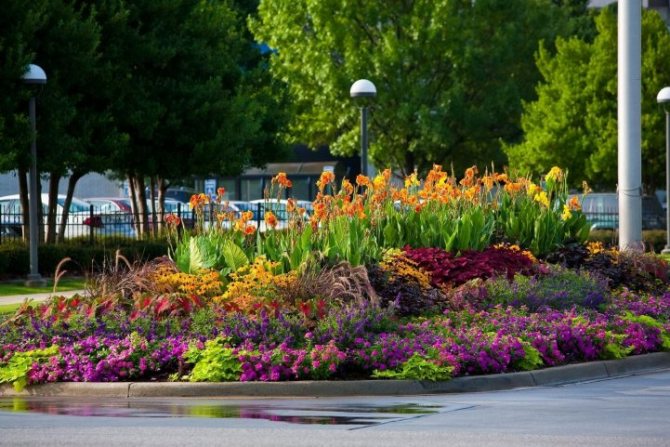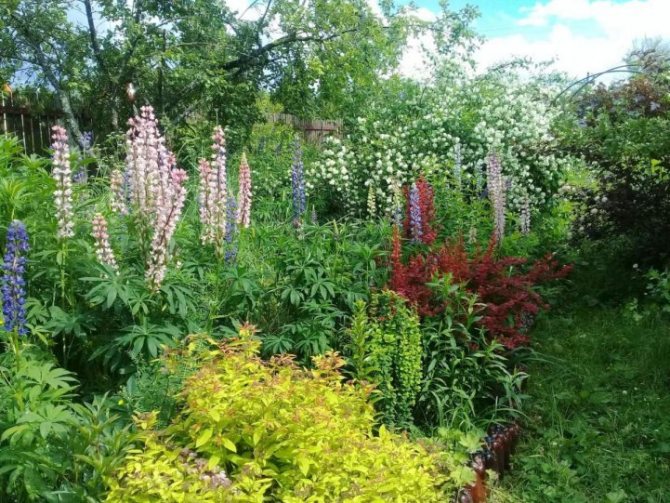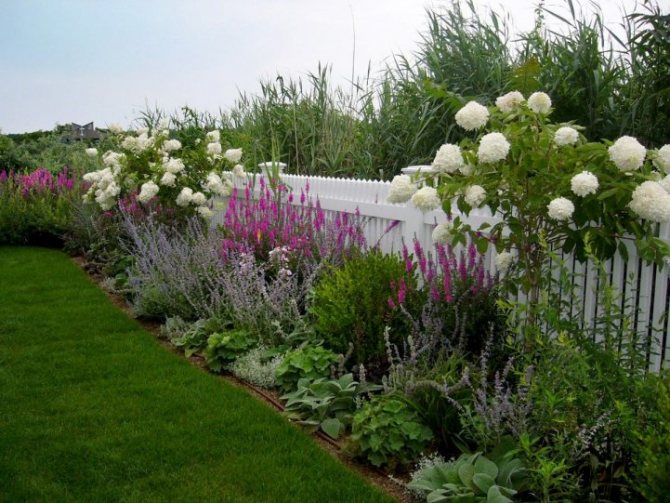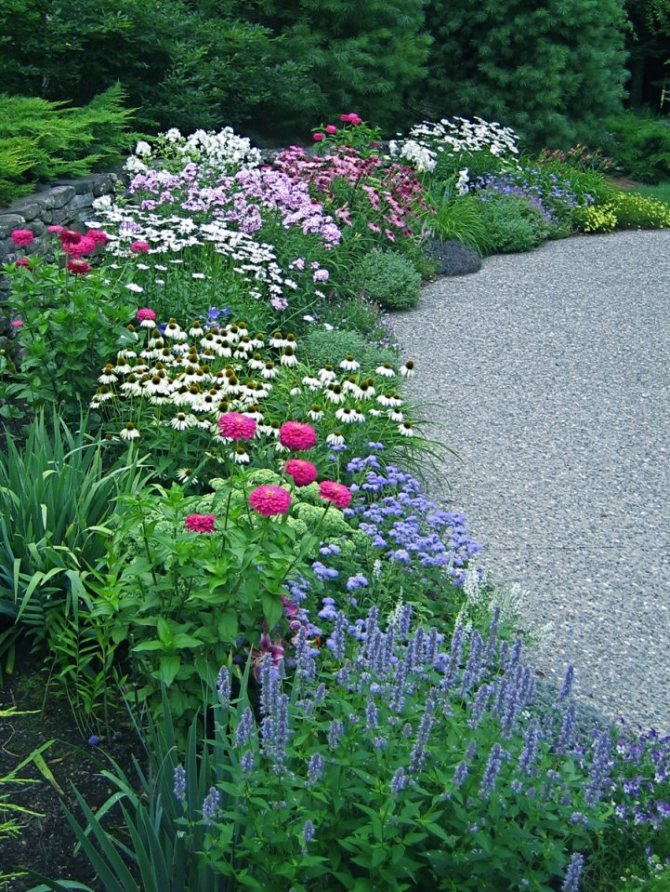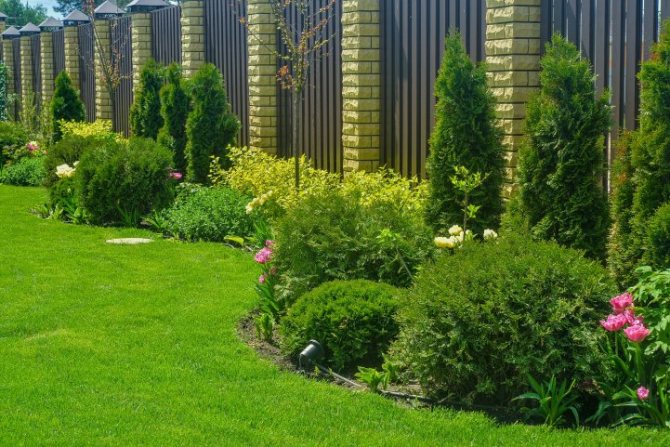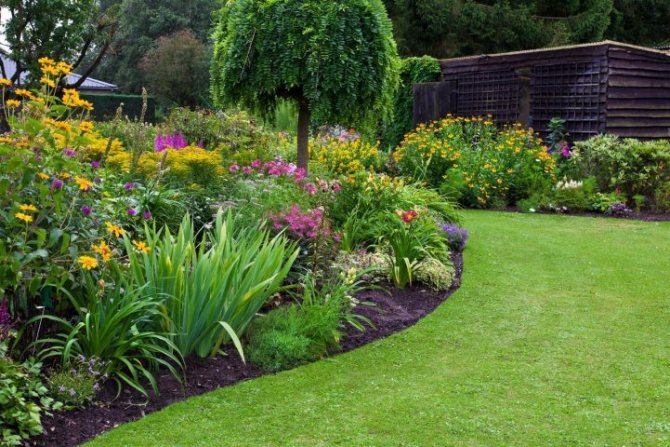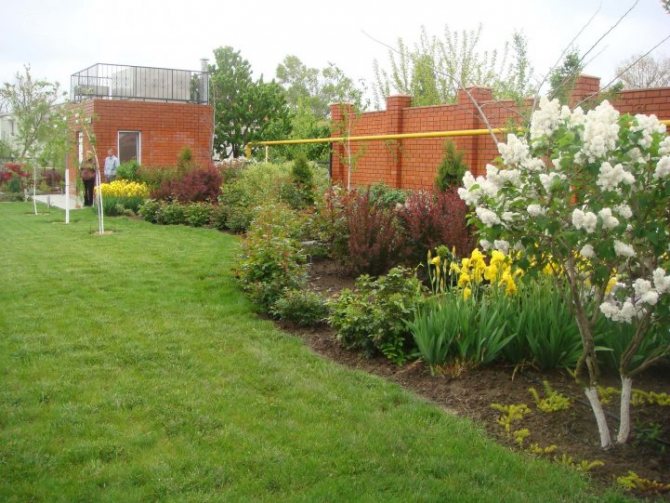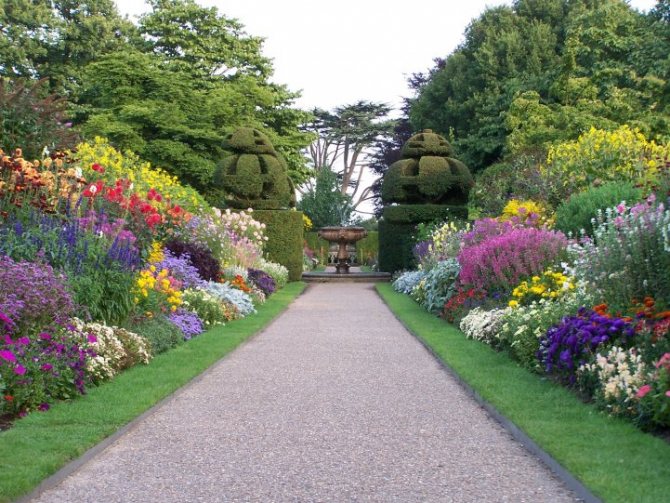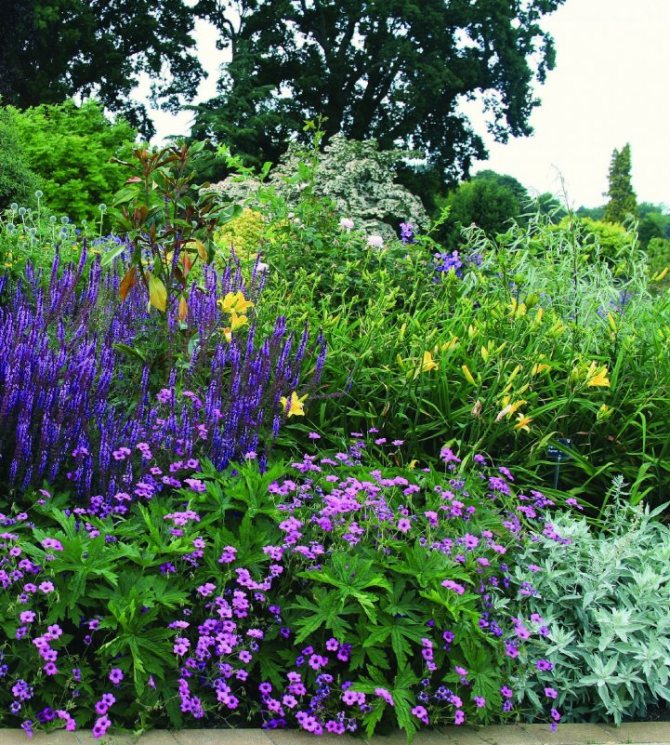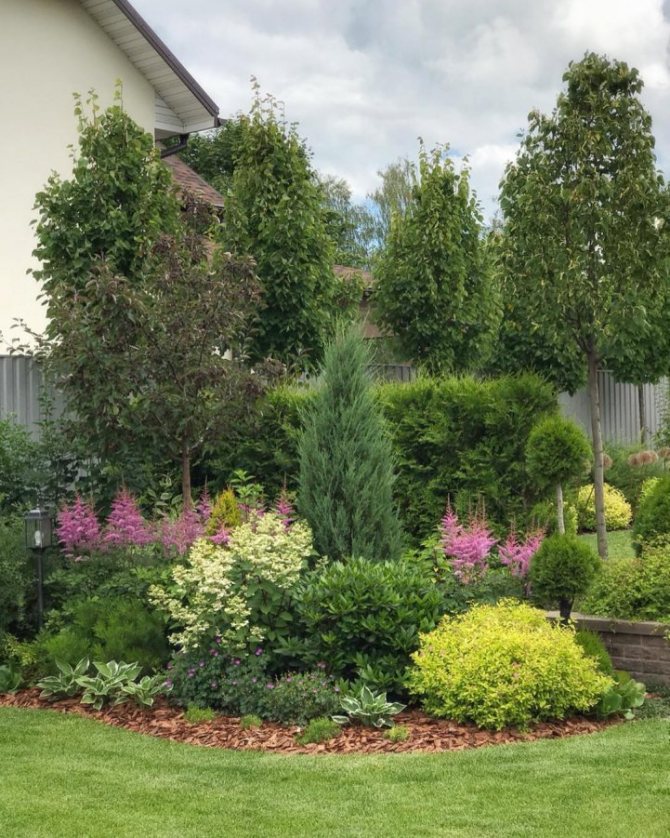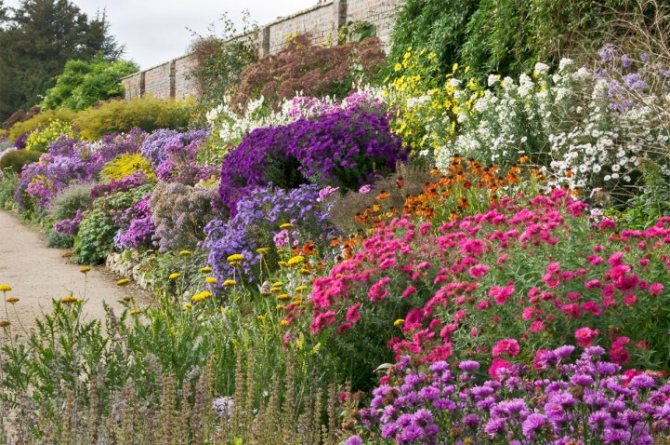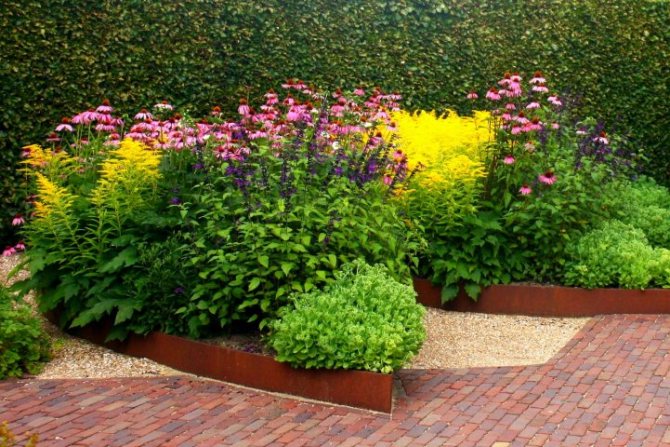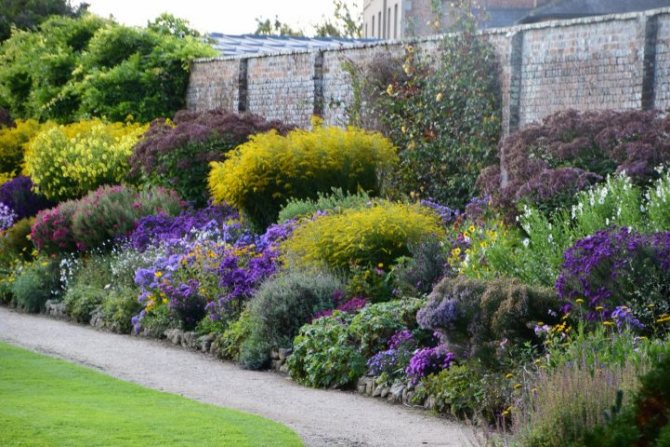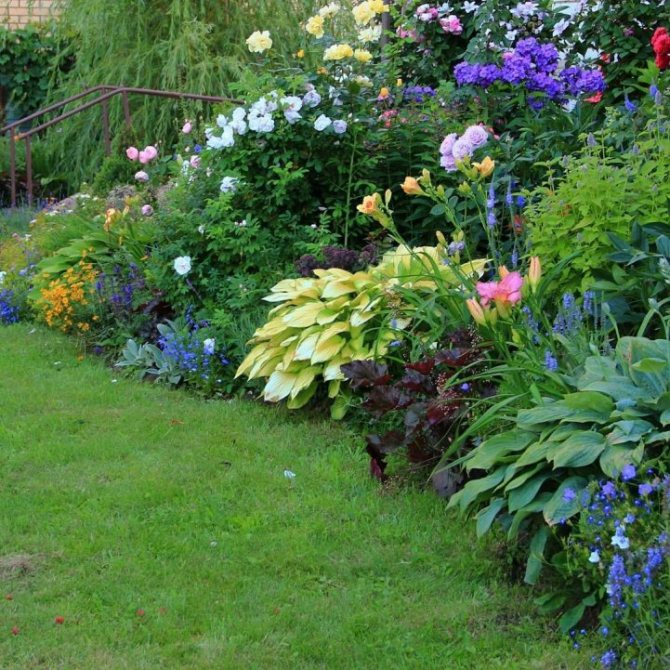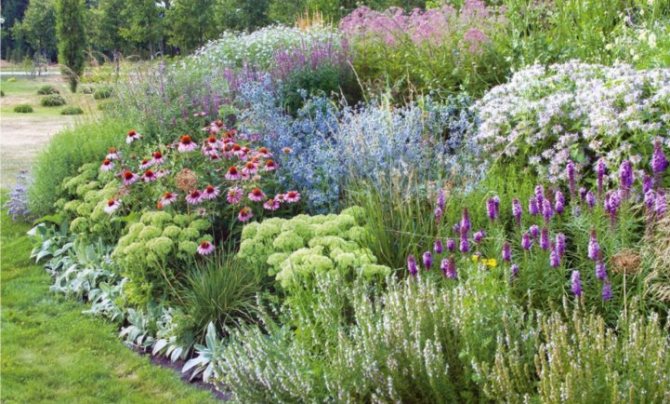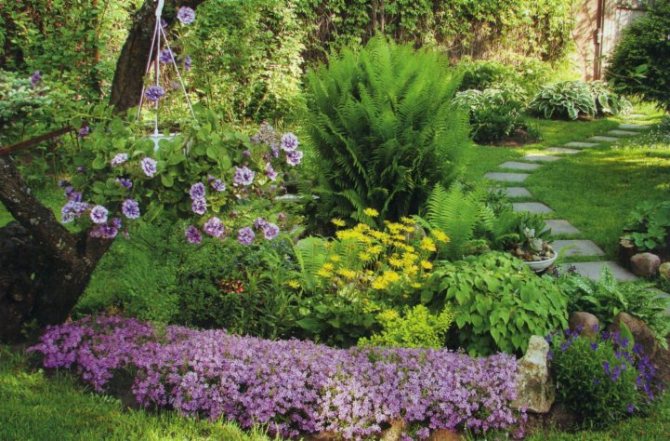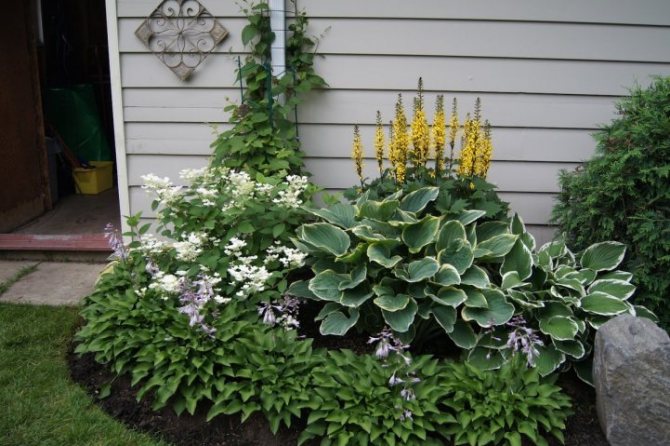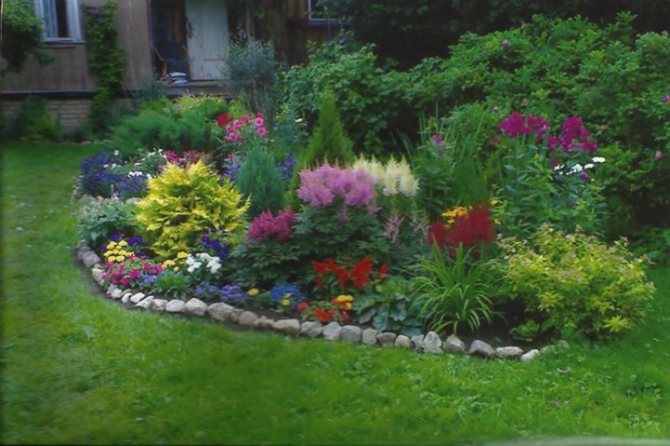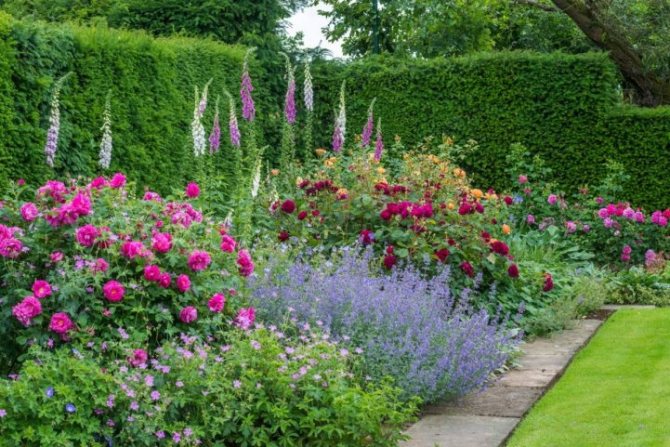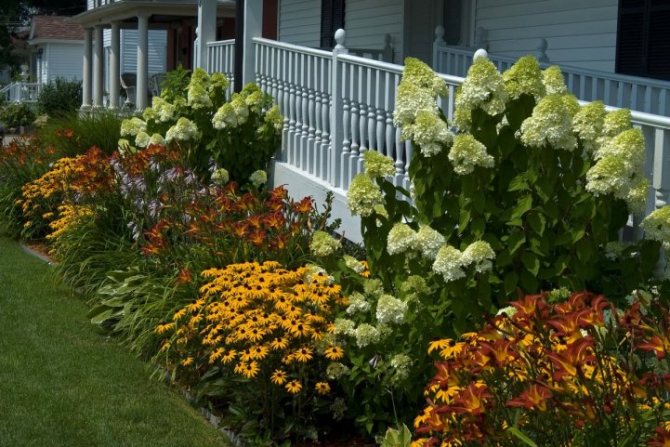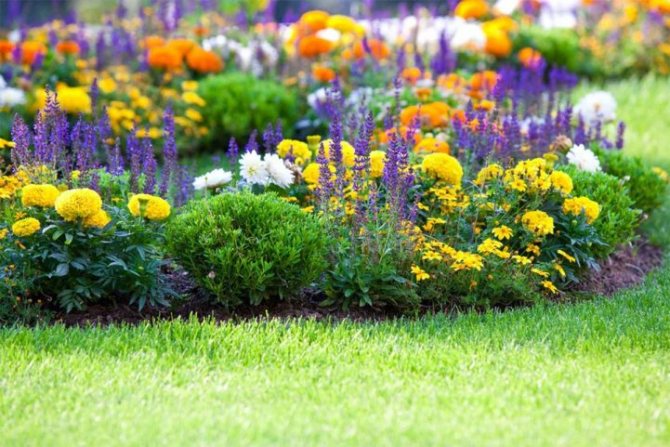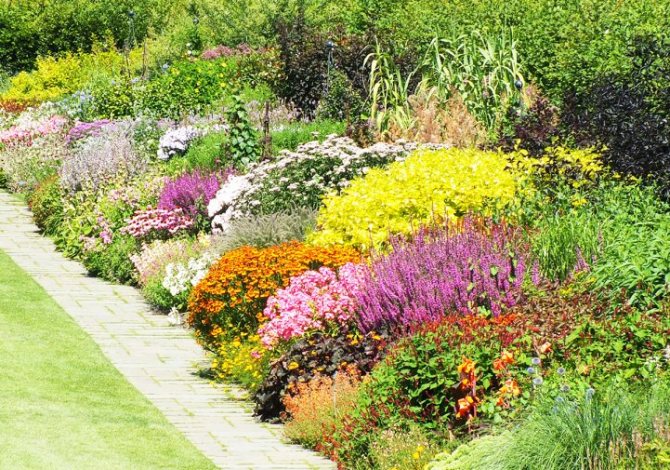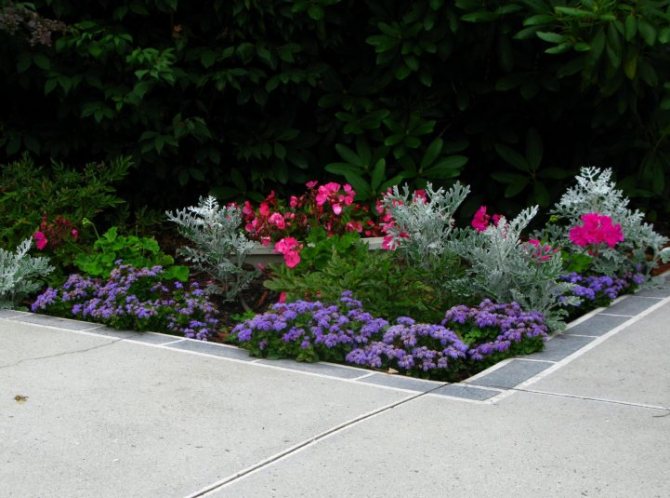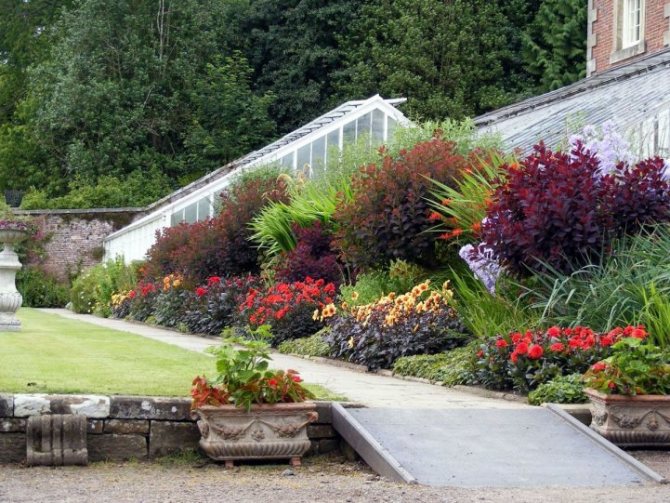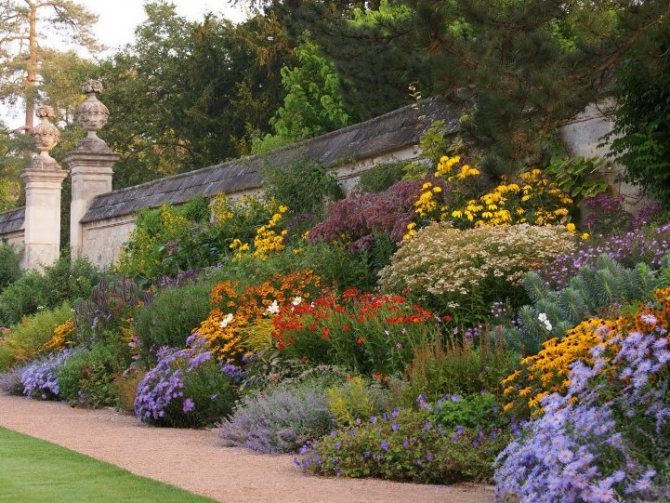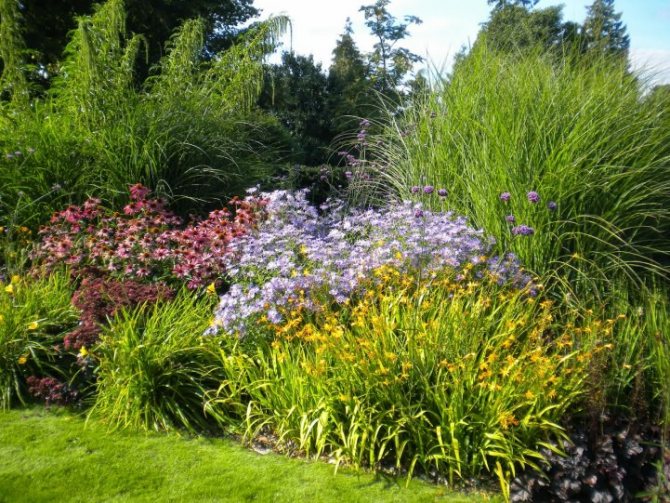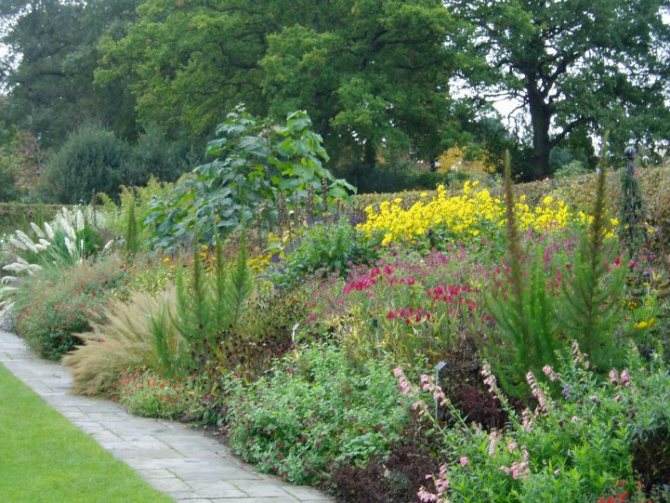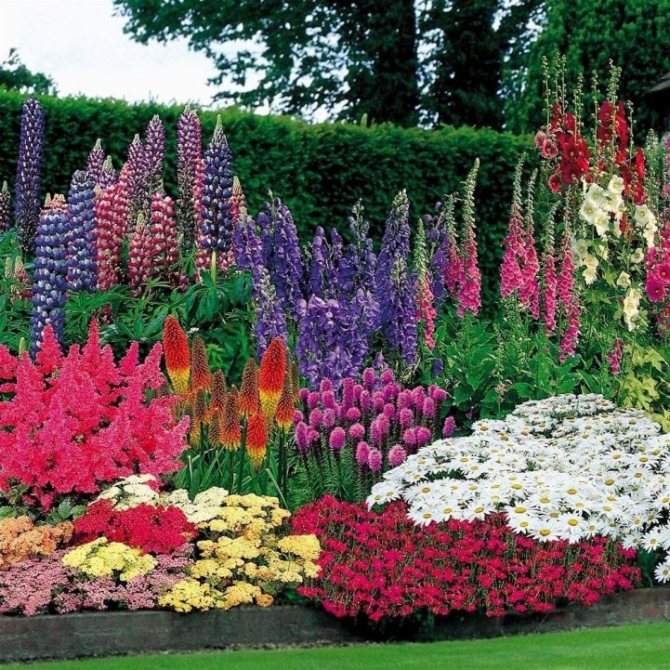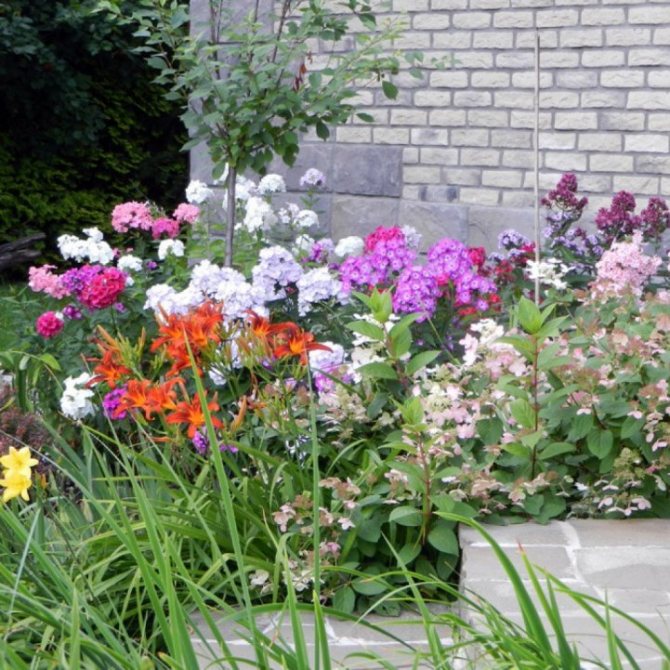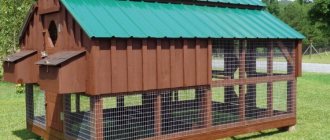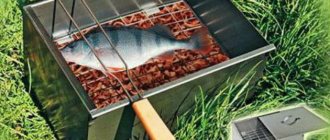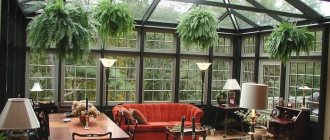Mixborders came to us from England, and translated into our language their name sounds like "mixed flower garden"
Flower beds of continuous flowering - perennial mixborders - are the most popular elements of landscape design today. To create a flower bed from various seemingly completely incompatible varieties and types of ornamental plants is a whole art.
But all these difficulties cannot become an obstacle to creating mixborders from perennials with your own hands. The main thing is to stock up on theoretical knowledge and always be patient. And in the years to come, you will admire the flowering of your favorite plants.
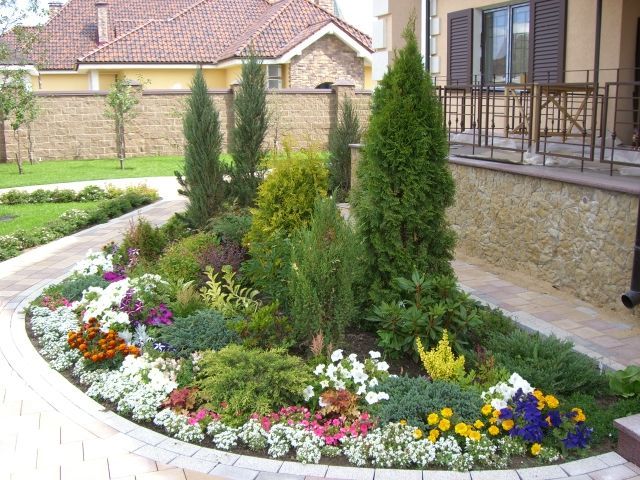
Mixborder of flowering perennials and ornamental shrubs
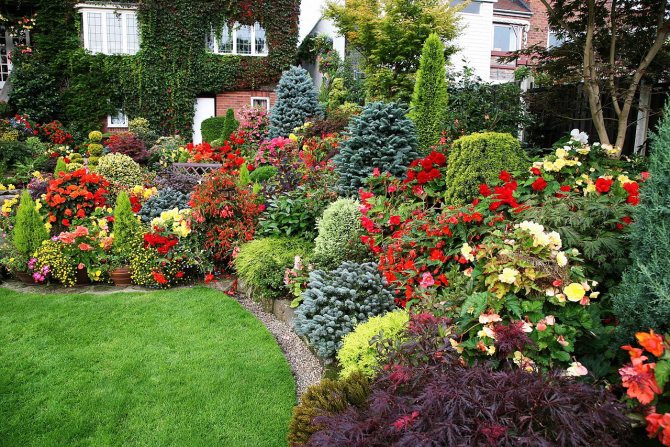

Perennial mixborders lining garden paths are a real find for those who want their garden to always look great.


Flowers and shrubs should be placed in groups, and their number in a group depends on the size of the plants and the area of the flower garden
What is a mixborder?
A mixborder is a multi-tiered flower garden made up of several species of perennial plants. Its main feature and advantage is the specific selection of flowers and shrubs.


Each plant should not only blend well with its neighbors, but also bloom in such a way that faded plants are imperceptibly replaced by new ones.
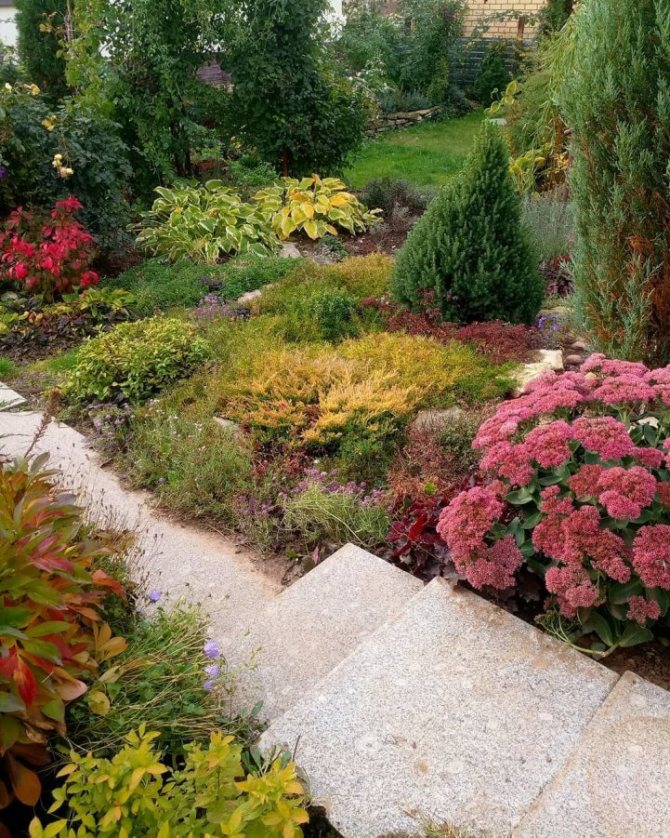

A properly designed mixborder scheme will allow you to extend the flowering period from early spring to the first frost.
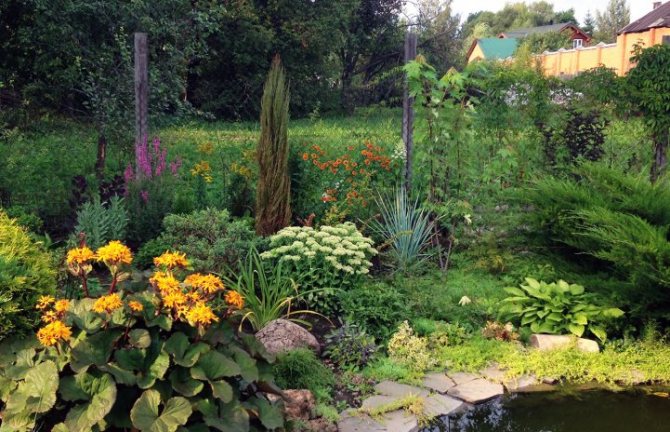

Ready mixborders do not require complex maintenance and have the peculiarity of changing their appearance during the season due to the gradual flowering and withering of different types of flowers.
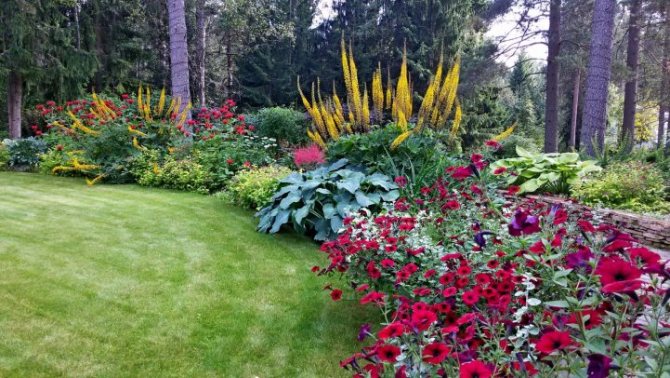

Special emphasis
Professionals call the last row the most important in a mixborder. Plants used in such a ridge are divided into two types:
- skeletal, which are the base of the composition.
Such plants give the flower bed a general look. Their professionals recommend placing them in the background at equal distances. If the plant has abundant flowering, has large leaves, you need to take this into account at the stage of planting them in the soil.
Advice! Landscaping experts advise planting large plants along fences, making them a bright accent in landscape design.
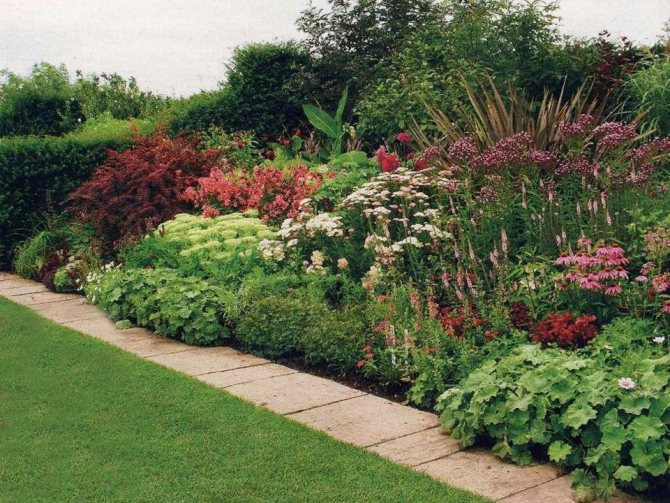

Skeletal plants should harmoniously fit into the overall composition of the mixborder. Some masters leave a secondary role for skeletal plants; they use them to decorate the center of the composition.
Among the popular types of plants used as skeletal plants, we note elderberry, jasmine, park roses, and red-leaved plum.
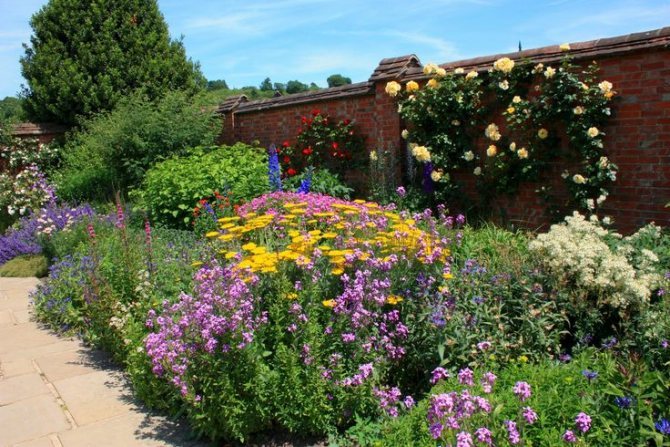

Those flowers that are chosen for the skeleton of the entire composition should not be rare and exotic, requiring special care. Skeletal plants are selected from among those that are frost-resistant, durable, unpretentious species.
Advice! To make the right choice of a skeletal plant, it is important to define a starting point of view. A complete picture of the mixborder being created should be available from this point.


Mixborder placement
Before starting to pick up plants, assess the illumination of the area.If it is flooded with light, then shade-loving plants will not take root and will quickly die. The same fate awaits light-loving plants in a shady area.
We recommend reading:
- Effective Weed Control - An overview of the best weed control products and methods. Geotextile and the rules for its laying (145 photos and videos)


Flowers for a flower bed blooming all summer - an overview of unpretentious types of flowers for the whole summer (85 photos)
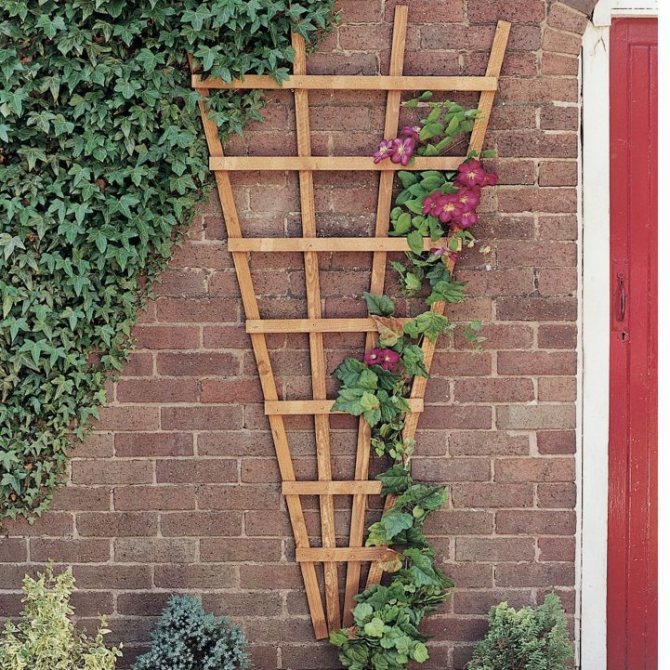

Do-it-yourself trellis - 110 photos how to make your own hands and video tips for use in landscape design
Assess the quality of the soil. On soft, well-fed soil, almost any plant can take root, but on rocky soil it is better to make a coniferous mixborder from horizontal juniper, mountain pine Mugus, Maxwell spruce and Virginia cypress.
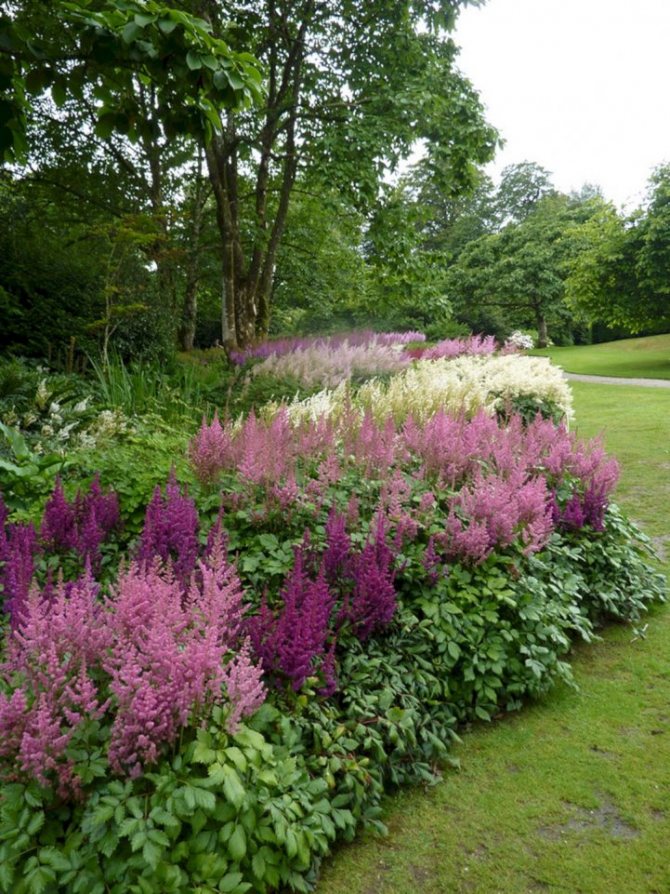

The acidity of the soil and its composition are also important. Based on these parameters, we can conclude which plants will be comfortable on the site.
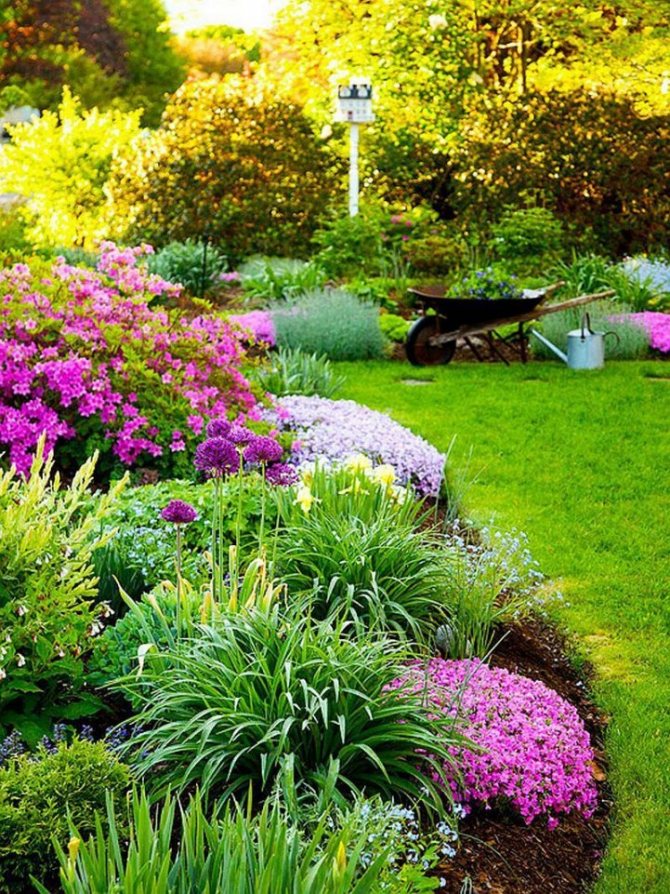

In the shadow
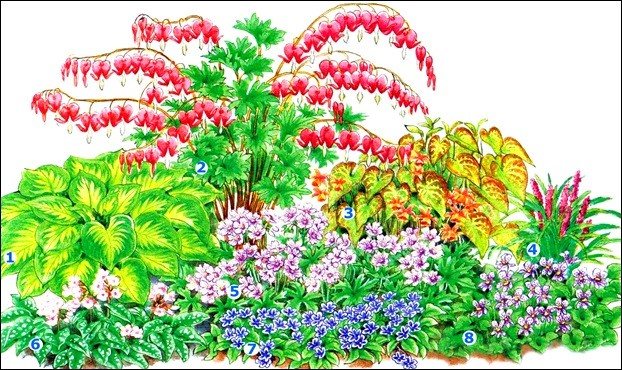

This version of the mixborder will be optimal for a semi-shaded place:
- Function (hosta) with yellow veins,
- Dicenter: pink heart-shaped flowers with a white "tear", also the plant is popularly called "broken heart",
- Epimedium red (Horny Goat Weed),
- Liriope muskarevny,
- Geranium lilac
- White-flowered lungwort,
- Spring navel. In the month of May, it is the main dominant of the mixborder due to its bright blue and white flowers,
- Violets.
Plant selection
Select plants with the same watering requirements for top dressing.
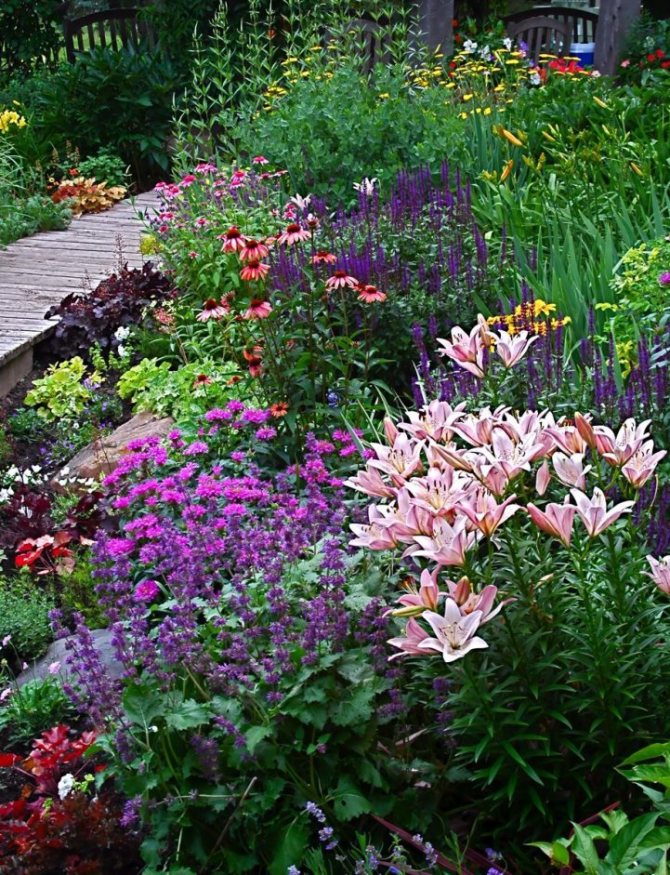

Flowering plants must be selected in such a way that 2-3 of their species bloom at the same time, after which they should be gradually replaced by others, without creating a temporary effect of desolation.
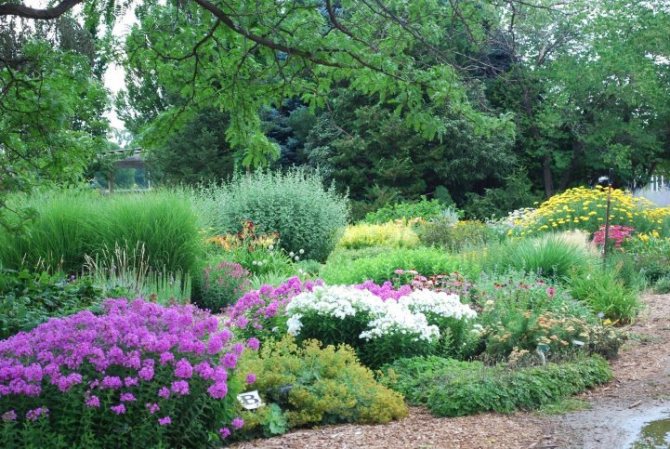

All plants in the flower garden must have a root system that extends deep into the soil. Plants with roots diverging to the side will inevitably destroy their neighbors.
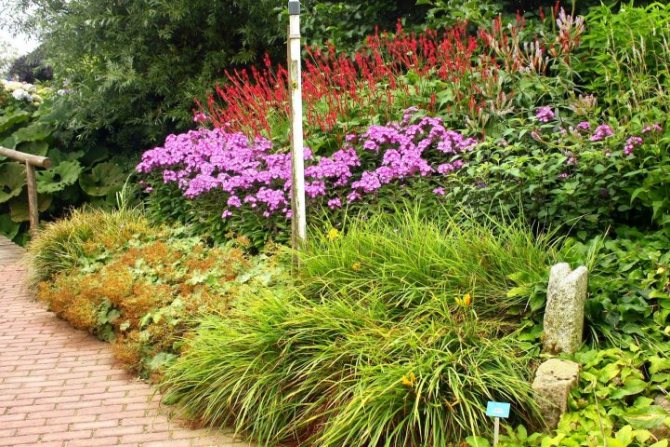

We recommend reading:
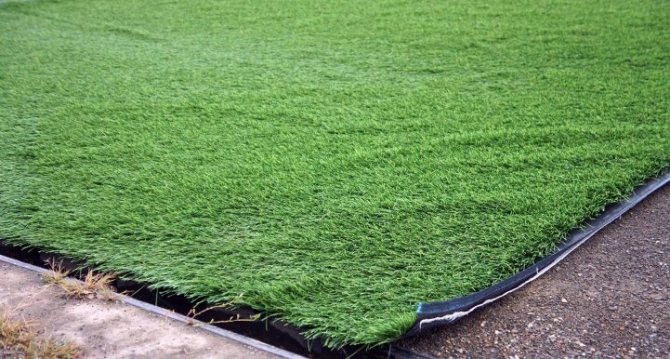

Laying an artificial turf with your own hands: how to choose and a step-by-step description of how to lay a lawn (100 photos)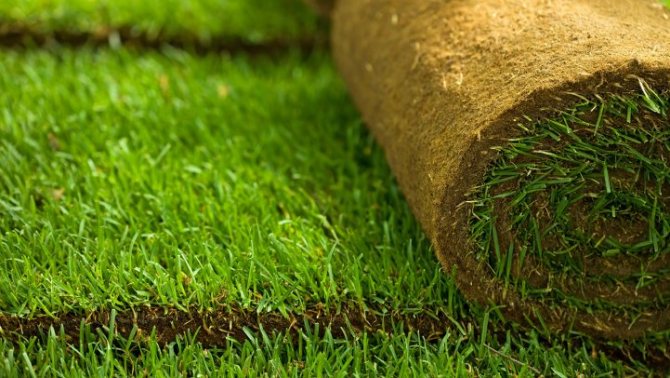

How to lay a roll lawn - a step-by-step master class and tips on how to lay a roll lawn correctly (120 photos + video)
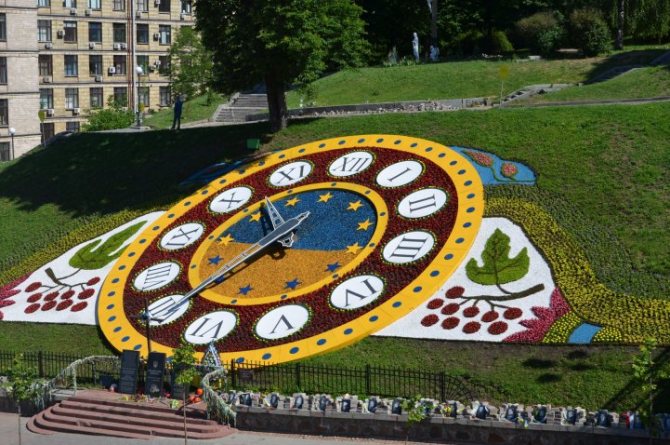

The best flower clock - a step-by-step description of how to make a beautiful element of landscape design correctly
Dilute flowering compositions with plants with decorative leaves such as ferns.
Color spectrum
This is hardly the most important task from a decorative point of view for any gardener - to create a beautiful and solid mixborder. After all, that's why we create it, in order to please ourselves and support the aesthetic principle in ourselves. Therefore, the main burden falls on color perception. And you should take care of it even when drawing up a plan for a future mixborder.
If you select plants without sense, then the composition will be destroyed, and you will not have a full perception of the result of your work.
Mixed flower beds can be divided into several types: monochrome, contrasting, tinted, harmoniously calm and variegated. If you do not feel confident in your abilities or just want to achieve one hundred percent result, make a flower garden based on two colors that go well with each other.


A colorful mixborder is not so difficult to create, it is more difficult to fit it into the style of the site
Landscape designers who are good at color can use the color wheel to choose an excellent combination of several colors, where everything can be built on contrast or a good combination of adjacent shades.
Mixborder shape and plant placement
The shape of the mixborder should be streamlined without unnaturally right angles and clear lines. The main difference between this type of flower bed from others is the approximation of its appearance to the natural one.


It is necessary to arrange plants in such a way that large species do not obscure or hide small ones.For example, in a mixborder of shrubs, creeping grasses and flowers, herbs should be brought to the fore, and tall bushes should be planted behind all the plants.


Do not plant many similar plants side by side. A single faded flower will easily hide under the leaves and petals of a new flowering plant, but the area where 3-4 plants of the same species grew is more difficult to hide.
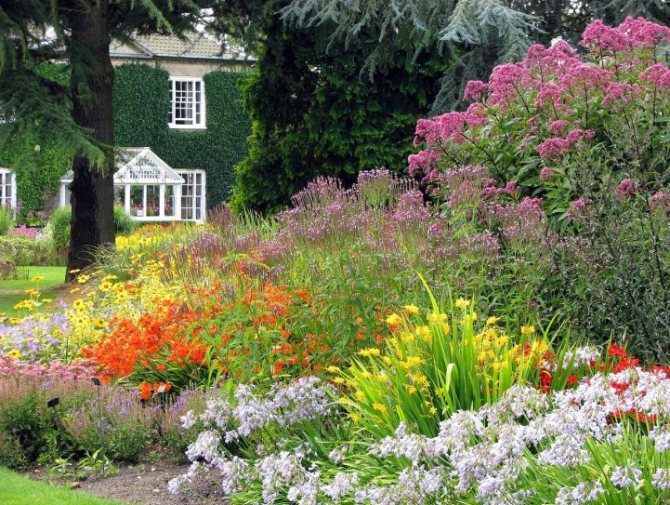

A small patch of front garden will appear empty. Therefore, plant nearby plants with different flowering periods.
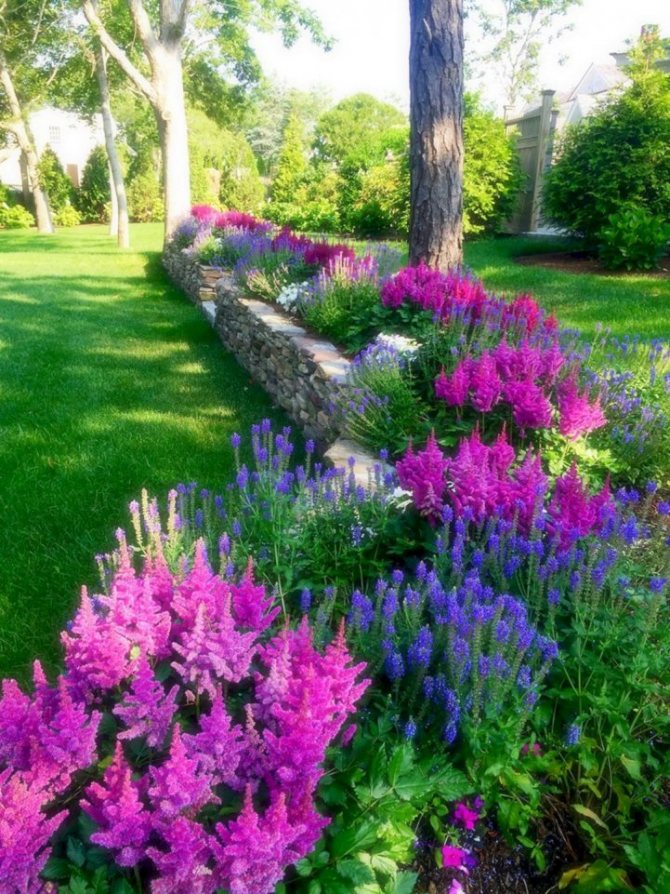

Don't plant a lot of plants. During the design of the mixborder, it may be tempting to plant a lot of plants to make the flower bed seem more luxuriant. This should not be done, as perennial plants tend to grow gradually.
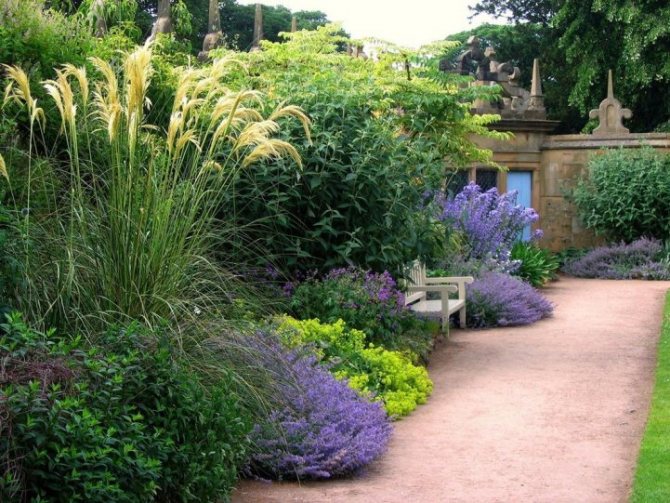

If there is not enough space for the plants, they will begin to overwhelm weaker species and the front garden will lose all attractiveness. If you want to make the mixborder more magnificent, plant bright, unpretentious annuals.
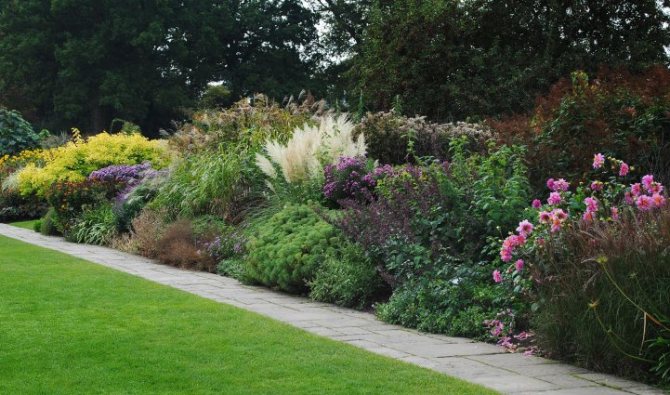

We recommend reading:


Lianas for the garden - an overview of the best climbing flowers and popular types of plants for garden and landscape design (120 photos)

Rules for whitewashing trees - a step-by-step description of whitewashing and methods of quick processing of garden trees (115 photos)


What are the most unpretentious flowers? Review of the most beautiful and easy-care plants for garden or landscape design (105 photos)
Strong-smelling plants that repel insects can be added to the mixborder: wormwood, thyme, marigolds. This technique will not only protect the plantings from pests, but will also be useful for scaring away bees if the mixborder is located near the windows.
Features of the middle row of the composition
Designers leave it for plants and flowers with tall trunks. The second row of the created composition is an excellent opportunity for the practical implementation of the master's creative ideas. For example, lilies will be appropriate in such a composition, as well as any flowers that bloom in the middle of summer.
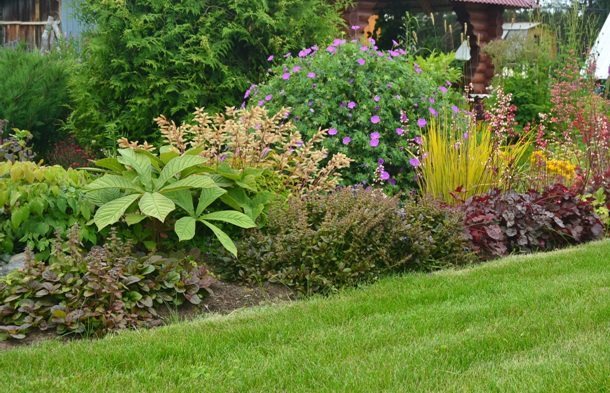

Of course, the plant will not be able to reach its maximum height in the first year of life, so a layer of mulch can be laid. Professionals are convinced that some summer plants have a negative effect on flowers, therefore, when choosing a composition, it is important to take into account a lot of nuances.
They propose to create a mixborder from perennial plants on the outer or inner border of the garden plot. You can also choose simpler elements for such work: lawns, garden paths, rock gardens.


Perennials can be used as filling plants. They can be "diluted" with several decorative leafy plants and hybrids. For example, silvery leaves of wormwood or cineraria have an exquisite appearance against a background of bright colors. If preference is given to a contrasting flower bed, in this case, you can plant some varieties of Heuchera, Tunbergia, Geranium.
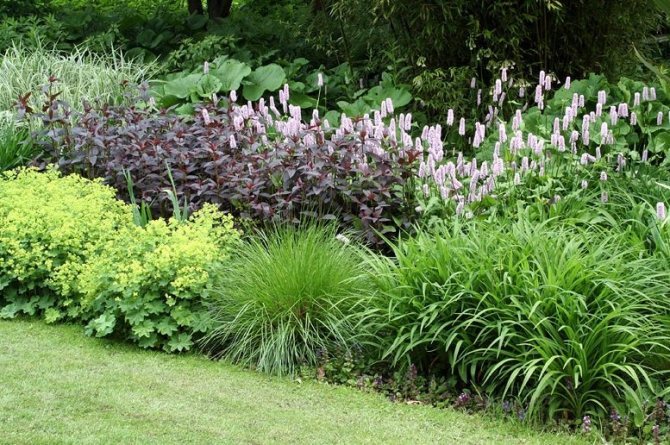

Professionals suggest complementing the image with cereal plants: sedge, pearl barley, feather grass. The remaining free space can be filled with annuals, which in the fall will hand over the "reins" to jasmine and tulips.
Mixborder schemes
After taking into account all the nuances of the location of the site, the quality of the soil and the illumination, you can begin to select plants to your taste. It will be easiest for a beginner to recreate a mixborder from a photo.
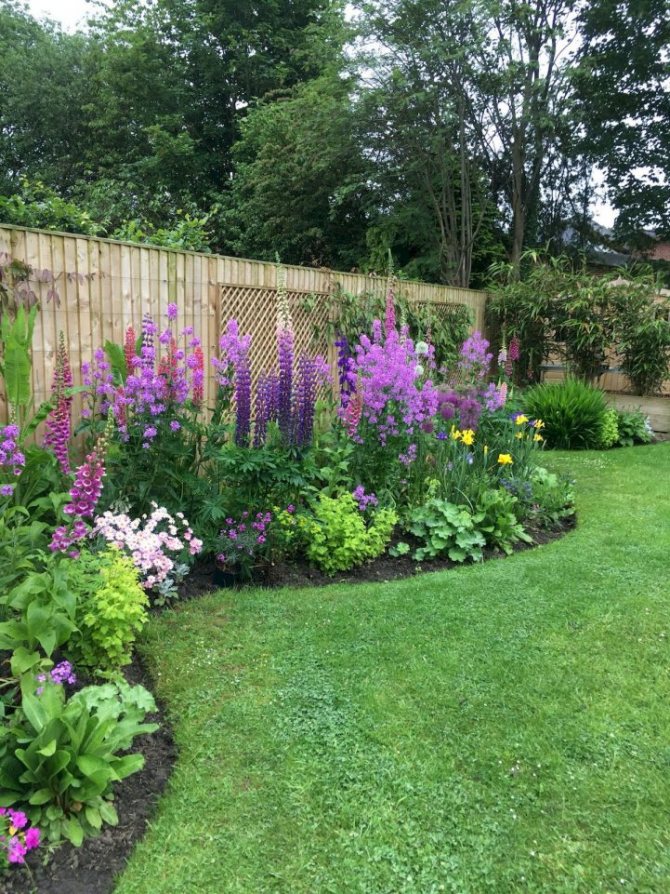

If you decide to create such a flower garden on your own, then start with the selection of large plants that will form the basis of the composition.
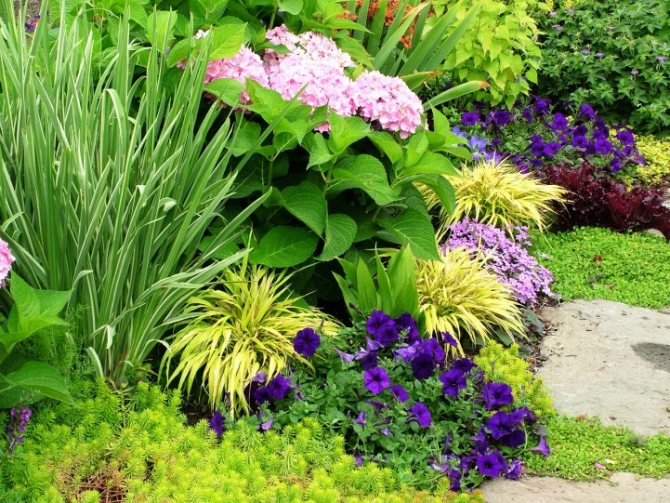

You can make mixborders with roses, dwarf spruces, weeping larch or juniper. It is skeletal plants that set the tone for the entire composition.
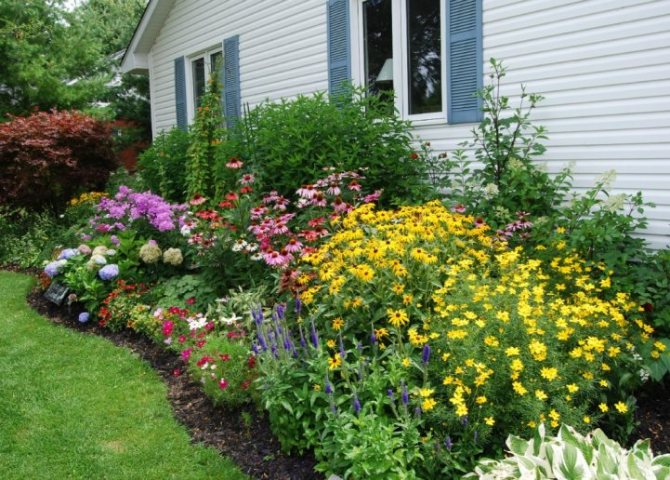

Further, tall plants are selected for the middle row of plantings: delphiniums, irises, echinacea. In the foreground are small bulbous plants or perennial creeping.


With roses
Schematic of the below mixborder with roses: 1. Rose Winchester Kafidral, 2. Rose Lady Emma Hamilton, 3.Rose Moulinex, 4. Rose William Shakespeare, 5. Juniper, 6. Sage (Fassen's catnip), 7. Hosta.
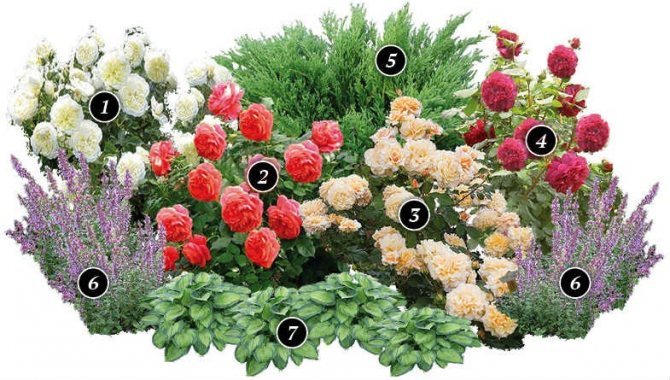

Mixborder of white roses with ground cover plants:
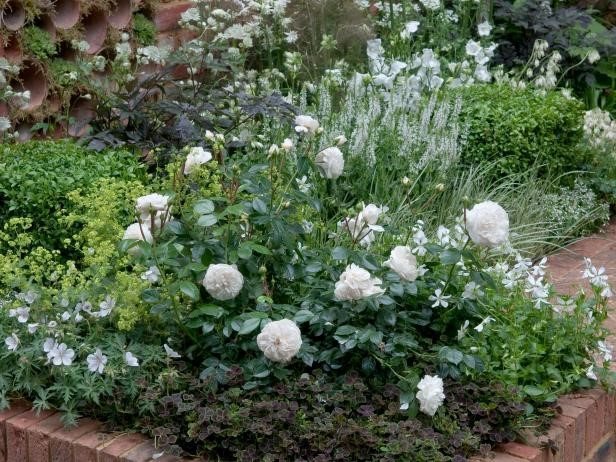

Mixborder of charming polyanthus roses Bonika 82 and beautifully flowering perennial plants: purple Veronica and pink small-petaled Erigeron.
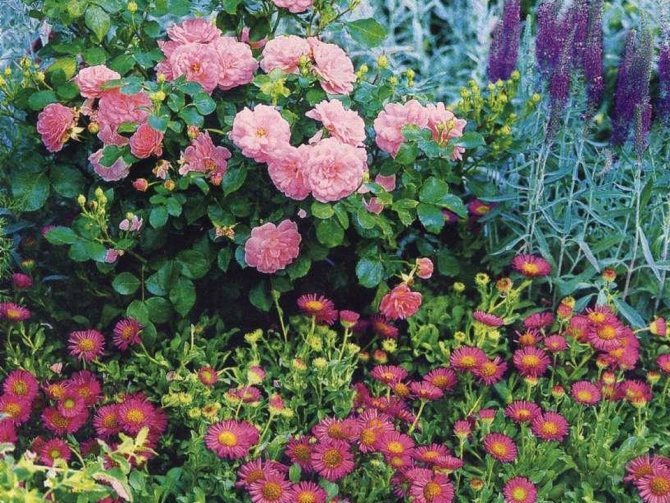

Large mixborder of pink-red spirea, yellow escholzia, lilac sage, red-flowered centranthus, as well as red and white spray roses.
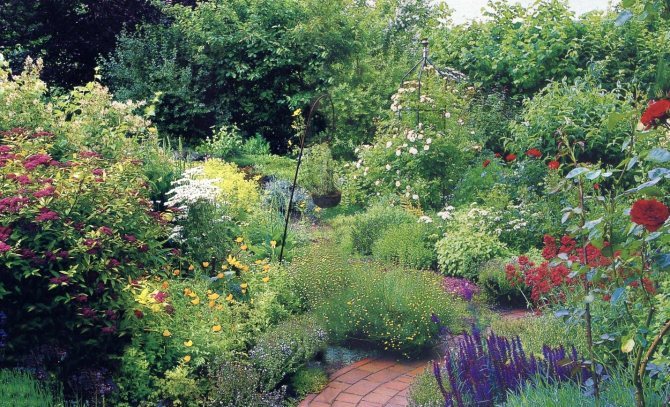

Photo of mixborders from perennials
Read here Instructions on how to decorate a garden - DIY design rules and 130 photos of examples of beautiful garden design
Did you like the article?
1+

